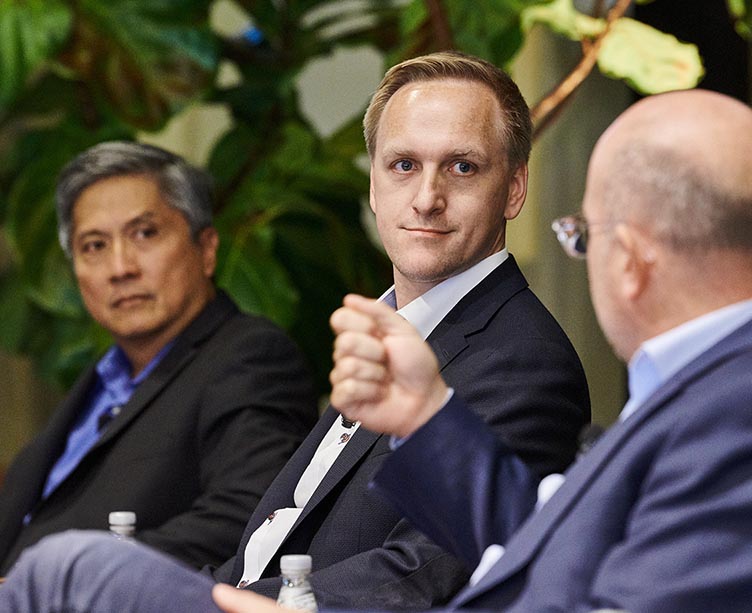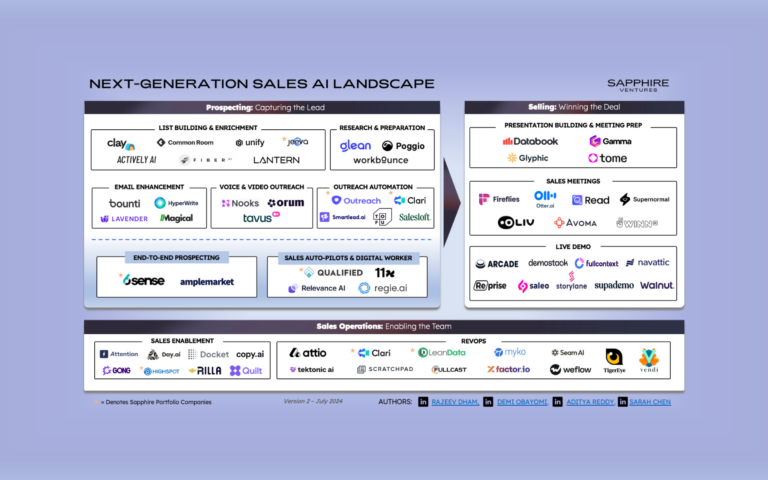Since 2014, Sapphire Ventures has been a passionate investor in the Chief Information Officer (CIO) ecosystem. It’s in our DNA to bring startups and enterprise IT leaders together for productive conversations and to generate new solutions for pressing (and often unprecedented) business challenges.
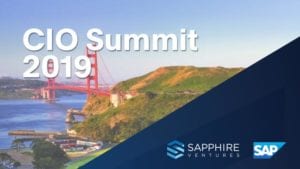
Since our inception, we’ve seen the role of the CIO evolve tremendously and become ever more central to corporate strategy. To support CIOs in this rapidly changing environment, and to guide the emerging startups and technology vendors that cater to them, we host an annual CIO Summit where business and IT leaders can share experiences, learn from one another, connect with the next generation of IT disruptors, and discover new ways forward.
This September, Sapphire Ventures and our co-host SAP held the firm’s 5th annual CIO Summit. Participants represented global enterprises with a combined $1.6T in market cap and $27B in IT budgets.(1) Featured speakers included:
- Jason Pontin, Former Editor-in-Chief, MIT Technology Review
- Greg Schott, Former CEO, MuleSoft
- Lakshmi Hanspal, Global CISO, Box
- JC Curleigh, CEO, Gibson Guitars and Former President, Levi’s
- Jana Kanyadan, Global CIO, Mohawk Industries
- Pedro Canahuati, VP Security & Privacy Engineering, Facebook
- Tuck Rickards, Managing Director & Co-Lead for the Technology Officers Practice, CEO and Boards Practice, Russell Reynolds Associates
- Amy Brooks, President, Team Marketing and Business Operations, and Chief Innovation Officer, National Basketball Association (NBA)
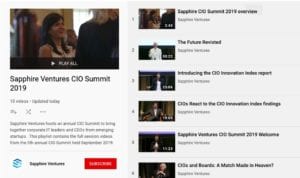
While prior Summits focused on a singular theme — digital transformation (2015), improving the customer experience (2016), the shifting role of the CIO in driving top-line results (2017), and the future of work (2018), the recent convergence of many of these issues in 2019 inspired us to let Summit attendees steer the agenda by bringing together multiple topics CIOs are experiencing on the front lines of innovation.
Below are three actionable takeaways that developed in the conversations at this year’s event. CIOs can use and build upon this wisdom to ensure their organizations remain on the cutting edge in the year to come.
Takeaway 1: CIOs are re-designing their vendor portfolios — and making more room for startups
Today, executive teams aren’t looking for a CIO to simply keep the lights on. They want a transformational CIO who can level up their entire organization with technology that increases efficiency and productivity while sharpening their intelligence. Today, many CIOs have designed vendor portfolios that help them improve upon the status quo and eliminate much of the heavy lifting. There is one key shift underway in the composition of the typical enterprise IT portfolio, however. In the past, the majority of IT vendors were well-known and well-established (e.g., SAP, Salesforce, Workday, PeopleSoft); however, new data from Sapphire Ventures’ CIO Innovation Index — released for the first time at the 2019 CIO Summit — shows that startups are beginning to capture a growing share of wallet. The study shows that startups today comprise a median of 10% of IT budgets — and are set to grow to a median 15% over the next 12 months. The same study showed that 75% of CIOs expect that their IT portfolios will have more or the same number of vendors a year from now, indicating that dense and federated vendor landscapes are here to stay.
Our CIO Innovation Index showed that CIOs report unique benefits to working with startups relative to engaging more established vendors, including:
- More modern technology architecture
- Faster pace of product delivery
- Greater ability to influence the startup’s product roadmap
As Jana Kanyadan, Global CIO at Mohawk Industries, put it: “Working with startups is core to the digital innovation agenda at Mohawk. As global CIO, I encourage my team to regularly assess emerging technologies and disruptive startups that can aid our company’s transformation and enable us to better serve customers.”
At the same time, the startup universe is evolving so rapidly that, as a CIO, it can be difficult to know where to begin. To solve this, Sapphire Ventures also launched SV Explorer in 2018, a curated and easily searchable startup platform for enterprise IT leaders. Today, over 300 IT and business executives from large enterprises leverage the platform to simply search for a term such as “sales” or “big data,” and then discover and engage with vetted startups through the portal.
Takeaway 2: CIOs are zeroing in on the business value of cybersecurity solutions as threats escalate
Cybersecurity is one of the most pressing issues for CIOs today, and was a key topic of dialogue at the CIO Summit, with a panel featuring CXOs and executives from Box, AEG, Facebook and Sapphire portfolio company Netskope. For any CXO, however, it can be overwhelming to face the threat (or occurrence) of a cyber attack. In 2018 alone, over 6,500 data breaches and 5 billion compromised records were reported. According to IBM, the average cost of a data breach is up to $3.92 million — and recent data from McKinsey highlights that nearly 80% of technology executives don’t believe their cybersecurity programs can keep up with the criminals. There are serious financial and reputational costs to a cyber attack — and the pressure is on for CIOs and CISOs to protect their teams.
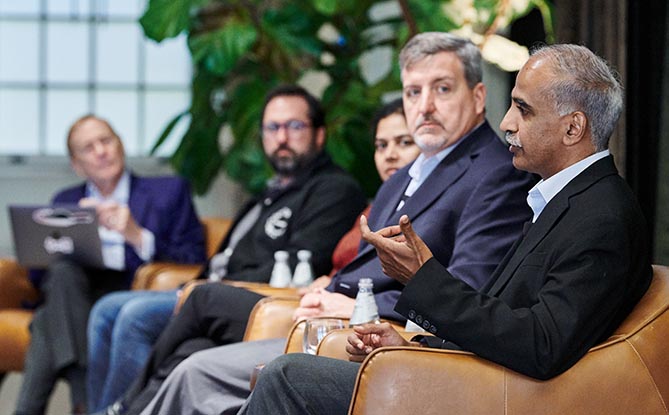
Despite these high stakes, it can be an added challenge for CIOs to communicate priorities and needs to non-technical leadership, particularly during a crisis. One way that several teams, including Facebook, teach their C-suite and boards about cybersecurity is through preemptive tests and learning exercises. Creating and running scenarios for different types of web application attacks or detecting user anomalies, for example, can help business leaders understand what’s most important, what could be a false alarm, and even model out costs and recovery from specific incidents before they occur.
In addition, articulating the cost of inaction can prompt decision makers invest in tools like Auth0 and Exabeam that can bear the burden of cyber risk and further mitigate losses from a breach. As a CIO, figuring out the best ways to collaborate and communicate about cybersecurity across the entire organization is key to staying afloat as the threat environment grows more complex.
Takeaway 3: CIOs are stepping up as innovation leaders
Traditionally, the role of the CIO was as a gatekeeper — the one who held the keys to the vendor portfolio, made the trains run on time, and manned the Help Desk. Today that has fundamentally changed. CIOs are stepping up as business and innovation leaders, serving as the eyes and ears of the organization as technology quickly evolves — and investing in the solutions they need to remain competitive.
The need for technical leadership at the highest levels is quickly increasing. Cyber threats, data analysis, cloud migrations — all of these critical topics require deep IT expertise. As President & CEO of Gibson Guitar Brands and former President of Levi’s James ‘JC’ Curleigh reminded us the CIO Summit, this isn’t restricted to young companies. The need for 100(+)-year old companies, like the ones he has helped lead, to remain innovative and have a startup mentality is stronger than ever. And with technology being at the center of industry disruption, the environment has never been better for CIOs to elevate their roles and contributions.
Board Service for CIOs, whether on public, private/startup, or not for profit Boards, was another key topic of conversation at the Summit, amid a growing trend of CIOs being tapped for corporate board positions . To be a valuable board member, however, it’s not enough to understand technology trends. According to Patty Morrison, former CIO, Cardinal Health and Board Director at numerous enterprises including Baxter Health and Splunk, it is essential to understand and be able to articulate how technology fits into the overall corporate strategy, forecasting, financial modeling, and meeting shareholder demands. Speaking on a panel titled “CIOs and Boards: A Match Made in Heaven?”, Morrison also stressed the importance for CIOs to take off their “operator” hats and assume a “governance” mindset, when thinking about the role of a Board Director.
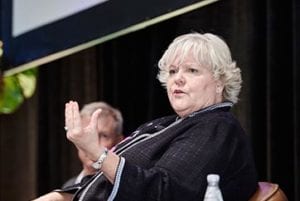
The good news is that for CIOs angling for board positions, there are a growing number of resources. From learning to network with purpose to crafting and articulating your authentic, valuable story to nail the interview, Sapphire Ventures’ Elizabeth Patterson teamed up with Tuck Rickards (Managing Director & Co-Lead for the Technology Officers Practice, CEO and Boards Practice, Russell Reynolds Associates), and Patty Morrison to brainstorm and share best practices for making changes in the upper echelons of corporate leadership.
A family reunion
Now in its fifth year, the CIO Summit has begun to feel like a family reunion for many of us. For IT leaders, it’s a chance to connect and remember that many others are going through similar challenges in a constantly shifting tech environment — and inspire one another to take bold, innovative steps forward. For the startups and VCs in our orbit, it is a unique moment to get inside the minds of Global 2000 CIOs while also influencing their thinking on emerging technology trends. Stay tuned for more insights and takeaways from this and other Sapphire Ventures CIO initiatives and events. Onwards!
(1) Source: Pitchbook as of September 2019
